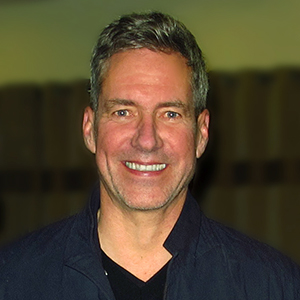Principal Investigator
I was born near Detroit (Motor City) in Pontiac, Michigan, home of the Pontiac Motor Company. My entire extended family worked in the auto industry at a time when a college education was not required to live a good life. We moved from the big city to the rural town of Holly, Michigan (population 4,000) when I was 15 years old where I struggled to fit in. That transition, combined with no thoughts about going to college, resulted in me graduating 4th from the bottom of my class. After high school I worked and traveled the country for two years. Eventually I became curious about college and enrolled at a local community college for one year (2 classes each semester). I realized I actually enjoyed learning and studying. The following year I attended a satellite campus of the University of Michigan in Flint for another year where I got good enough grades to gain admittance to Michigan State University (MSU). I became the first person in my family to get a college degree when I graduated from MSU with a B.S. in physiology, 7 years after finishing high school.
As a poor student at MSU, I needed to earn money. Divine intervention struck. I landed a job as a student technician in the laboratory of new faculty member in the Department of Pharmacology, Dr. Gregory Fink. The course of my life was changed forever. At the time Dr. Fink was in the early stages his career. Little did I know he would become regarded as an international leader in the study of the brain and hypertension. I instantly became obsessed with the subject and spent as much time in the lab as I could. Towards the end of my undergraduate studies, Dr. Fink recommended I consider going for a PhD in physiology, something that I never considered as a possibility. I applied to several programs in the Midwest. Divine intervention struck again. I was accepted at the Medical College of Wisconsin where the world-renowned physiologist Allen W. Cowley, Jr. had just become the new Chair of the Department of Physiology. As an undergraduate student I had read many publications of Dr. Cowley’s. I was thrilled to join his group. My thesis research focused on understanding how the hormone, vasopressin, modulates the activity of the sympathetic nervous system. Upon completion of my PhD, I wanted to continue studies investigating how the brain regulated the circulation. Divine intervention struck yet again. Through a series of random connections, I was blessed to join the laboratory of Dr. Lawrence Schramm in the Department of Biomedical Engineering at Johns Hopkins School of Medicine. Dr. Schramm was (and still is) highly regarded as a world leader in autonomic neuroscience. In Dr. Schramm’s laboratory I studied the role of spinal neural circuits in the regulation of sympathetic activity. While at Hopkins I successfully competed for my first grant from the National Institutes of Health as an independent investigator “Arterial Pressure in Paraplegia: Role of Spinal Systems".
I subsequently joined the faculty of the University of Minnesota in 1988. In 2002 I had the honor of being named the “Marvin and Hadassah Bacaner Endowed Chair in Cardiovascular Physiology”. Dr. Bacaner conducted pioneering studies at the University of Minnesota investigating how overactivity of the sympathetic nervous system contributes to cardiac disease.
I have been fortunate to work alongside numerous highly talented trainees and scientists in my laboratory over the years. I continue to interact and collaborate with my mentors, Drs. Fink, Cowley and Schramm to this day. I’m just as excited today about the research we are doing today as I was when I first walked into Dr. Finks lab as an undergraduate student. Maybe even more so. The moral of this story is - follow your passion and learn all you can from your mentors. All good things will flow from there.
